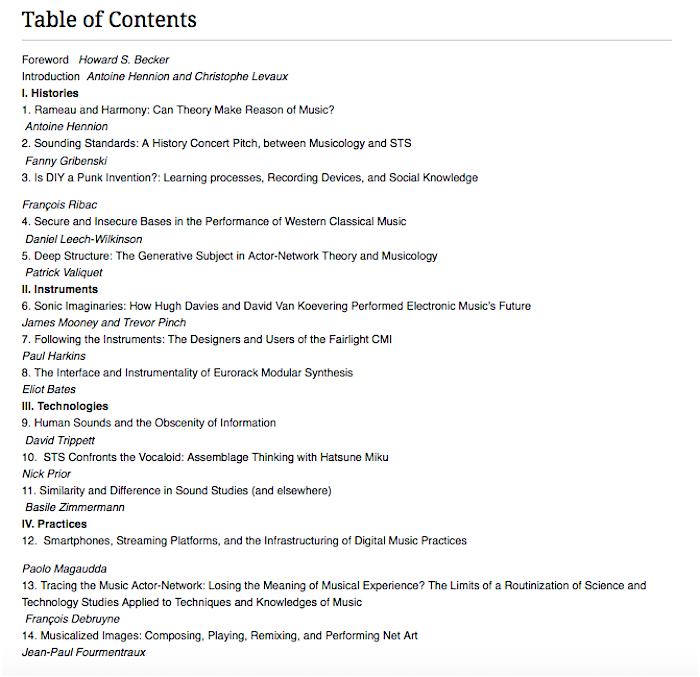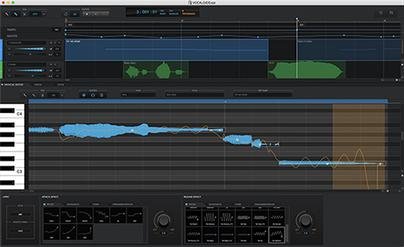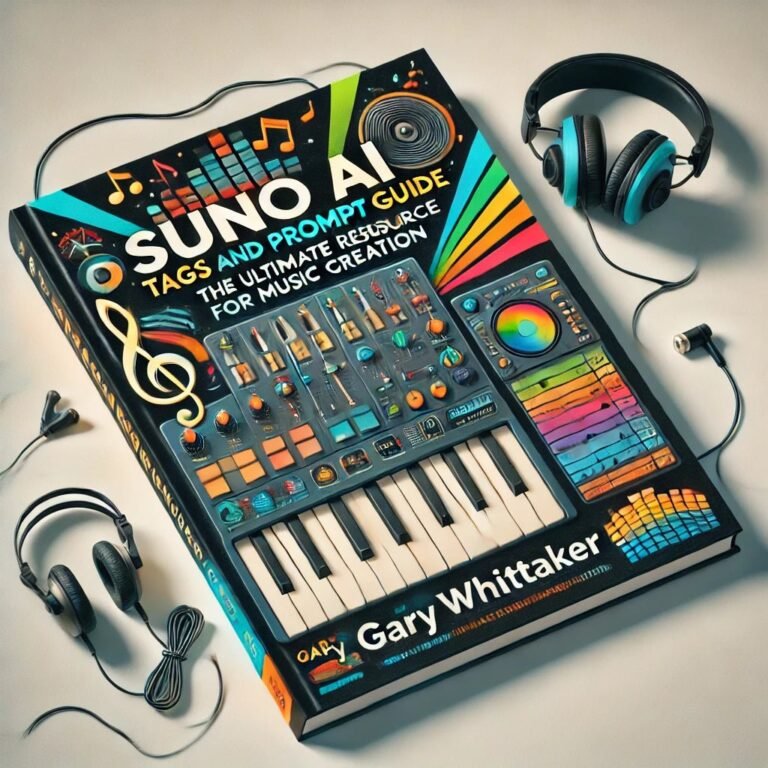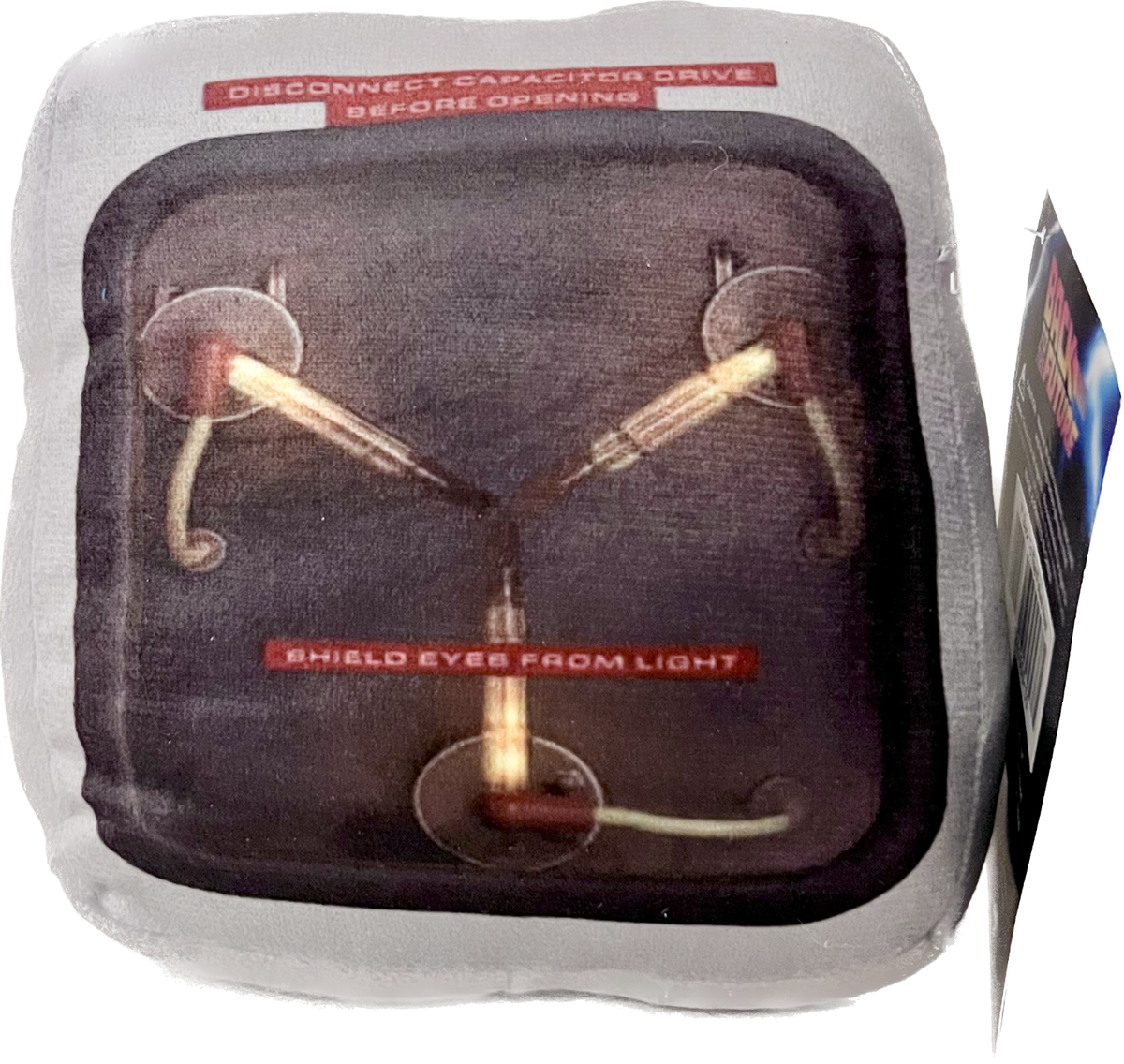Vocaloid technology has transformed digital music production. It uses advanced voice synthesis to create lifelike singing voices.
Vocaloid voice synthesis is more than just a tool for music enthusiasts. This technology blends science and art, giving users the power to produce unique vocals without a human singer. In this blog post, we will explore the science behind Vocaloid voice synthesis.
We’ll look at how it works, the technology involved, and why it has become so popular. Whether you're a music producer, a tech enthusiast, or just curious, understanding this technology will open up new creative possibilities. Let's dive into the fascinating world of Vocaloid voice synthesis.
Introduction To Vocaloid
Have you ever wondered how virtual singers like Hatsune Miku create their mesmerizing songs? This magic is powered by Vocaloid, a voice synthesis technology that brings digital voices to life. Vocaloid has become an integral part of music production and pop culture. Let's dive into the fascinating world of Vocaloid and understand its science.
What Is Vocaloid?
Vocaloid is a singing voice synthesis software developed by Yamaha. It allows users to create songs using synthesized voices. These voices are generated by combining recorded samples from real singers. Users can input lyrics and melodies to make these virtual singers perform.
History And Evolution
Vocaloid's journey began in 2000, when Yamaha started developing the technology. The first version, Vocaloid 1, was released in 2003. It featured voices like Leon and Lola. These voices were basic but marked the start of something big.
In 2007, Vocaloid 2 was introduced. This version included more realistic voices and better control over pitch and tone. It also brought us the iconic Hatsune Miku, who quickly became a global phenomenon.
Next came Vocaloid 3 in 2011. This version improved voice quality further and added new languages. It allowed more creativity for music producers worldwide.
Vocaloid 4, released in 2014, introduced growl effects and cross-synthesis. These features gave users even more control over their virtual singers' expressions and styles.
In 2018, Vocaloid 5 made its debut. It brought significant advancements in user interface and voice customization. It also included a wider range of voices and styles.
Today, Vocaloid continues to evolve. New voices and features are regularly added. It remains a powerful tool for music creation and a beloved part of many fans' lives.
How Vocaloid Works
Vocaloid is a unique software that creates synthesized singing. It uses a combination of recorded human voices and advanced technology. This section explains the science behind Vocaloid and how it works.
Voice Synthesis Technology
Vocaloid uses a technology called voice synthesis. This technology converts recorded human voices into digital sound. These recordings are called voice banks. Each voice bank is created by recording a singer's voice in a studio. The singer sings every possible sound in their language. These sounds are then chopped into tiny pieces called phonemes.
The software then assembles these phonemes to create words and sentences. This process is called concatenative synthesis. The result is a natural-sounding singing voice. Users can control pitch, tone, and tempo. This allows them to create unique and personalized songs.
Software Components
Vocaloid software has several key components:
- Editor: The main interface where users create songs.
- Voice Banks: The recorded voices used for synthesis.
- Score Editor: A tool for writing musical notes.
- Lyrics Editor: A tool for inputting song lyrics.
- Effectors: Tools for adding effects like reverb and chorus.
Users start by selecting a voice bank. They then input the melody using the score editor. Next, they add lyrics using the lyrics editor. Finally, they can enhance the song with effectors.
| Component | Function |
|---|---|
| Editor | Create songs |
| Voice Banks | Provide recorded voices |
| Score Editor | Write musical notes |
| Lyrics Editor | Input song lyrics |
| Effectors | Add sound effects |
These components work together to create a seamless music production experience. The result is a fully synthesized song that sounds natural and professional.
Creating A Vocaloid Voice
Creating a Vocaloid voice is a fascinating process. It involves various steps and technologies. Each voice is unique, yet the process remains consistent. Let's dive into the intricacies of how a Vocaloid voice comes to life.
Recording Process
The recording process is the first step. Professional singers record various phonemes. Phonemes are the distinct sounds in a language. For example, the “a” in “cat” and “a” in “cake” are different phonemes.
The singer records each phoneme multiple times. These recordings capture different pitches and tones. The goal is to capture the full range of the singer's voice. This ensures the Vocaloid can sing in any style or genre.
The recordings are then edited. Unwanted noise and errors are removed. The cleaned recordings are ready for the next step.
Sound Libraries
After recording, the sounds are organized into sound libraries. A sound library is a collection of recorded phonemes. Each phoneme is stored with its pitch and tone variations.
The sound library allows the Vocaloid software to access any phoneme. It can combine phonemes to create words and sentences. The software uses algorithms to ensure smooth transitions between phonemes.
Sound libraries are crucial. They determine the Vocaloid's vocal range and quality. A comprehensive sound library results in a more natural-sounding voice.
Creating a Vocaloid voice is both art and science. It involves careful recording and detailed sound libraries. This meticulous process brings Vocaloid characters to life, offering endless musical possibilities.

Credit: www.researchgate.net
Technical Aspects
The technical aspects of Vocaloid voice synthesis are fascinating. They involve complex algorithms and precise control mechanisms. These aspects ensure the creation of realistic and expressive vocal performances. Let’s explore the key technical components that make Vocaloid work.
Pitch And Tone Manipulation
Pitch and tone manipulation is crucial in Vocaloid voice synthesis. The software adjusts the pitch to match musical notes. It uses advanced algorithms to control the frequency of the sound waves. This process ensures that the voice matches the desired pitch accurately.
Tone manipulation involves adjusting the quality of the voice. It controls aspects like brightness, warmth, and harshness. This allows Vocaloid to produce a wide range of vocal styles. Users can create voices that sound soft and gentle or strong and powerful.
Phoneme And Transition Control
Phonemes are the basic sound units in any language. In Vocaloid, phoneme control is essential. The software must accurately reproduce each phoneme. This ensures the voice sounds natural and intelligible.
Transition control manages the smoothness between phonemes. This is vital for creating realistic speech. Smooth transitions make the voice flow naturally, avoiding robotic sounds.
Here’s a simplified table to illustrate the importance of phoneme and transition control:
| Aspect | Description | Importance |
|---|---|---|
| Phoneme Control | Accurate reproduction of sound units | Ensures natural speech |
| Transition Control | Smoothness between phonemes | Prevents robotic sounds |
The combination of phoneme and transition control is key. It helps create a voice that sounds human and expressive.
Artificial Intelligence And Vocaloid
Artificial Intelligence (AI) has transformed many fields, including music. Vocaloid is one of the exciting applications of AI. This software allows users to create songs using synthetic voices. AI plays a crucial role in this voice synthesis process.
Role Of Ai
AI is at the heart of Vocaloid's voice synthesis. It helps in converting text into speech. The AI algorithms analyze human voice patterns. They then replicate these patterns to create realistic synthetic voices.
The AI in Vocaloid learns from a vast amount of voice data. This data includes different tones, pitches, and accents. The AI uses this data to improve the voice quality over time.
Enhancements In Voice Quality
With the help of AI, Vocaloid has seen significant enhancements in voice quality. The voices sound more natural and human-like. Early versions of Vocaloid had robotic-sounding voices. But, with AI advancements, the voices now have more emotion and expression.
AI also helps in fine-tuning the voice. Users can adjust the pitch, tone, and speed of the voice. This makes the synthetic voices sound even more realistic.
Below is a table showing the progress in voice quality over different versions of Vocaloid:
| Vocaloid Version | Voice Quality |
|---|---|
| Vocaloid 1 | Robotic |
| Vocaloid 2 | Improved but still synthetic |
| Vocaloid 3 | More natural and expressive |
| Vocaloid 4 | Highly realistic and emotional |
AI continues to evolve, bringing even more improvements. Future versions of Vocaloid will likely have even higher quality voices.
Applications Of Vocaloid
Vocaloid voice synthesis technology has found numerous applications across different fields. It goes beyond just music, revolutionizing various industries. Here, we explore some key uses of Vocaloid.
Music Production
Vocaloid has transformed music production. Musicians can now create songs without needing a human singer. This opens up endless creative possibilities. Artists can experiment with different vocal styles and effects. This technology also helps independent musicians. They can produce high-quality tracks without a big budget. Vocaloid offers a wide range of voices, catering to different genres and moods.
Commercial Uses
Businesses have also adopted Vocaloid for various commercial purposes. Advertising agencies use Vocaloid voices in jingles and commercials. This makes their campaigns unique and memorable. Video game developers use Vocaloid for character voices. It adds a distinct touch to their games. Even theme parks use Vocaloid in their attractions. It enhances the visitor experience with unique vocal performances.
Challenges And Limitations
The technology behind Vocaloid voice synthesis has made remarkable progress. Yet, it faces several challenges and limitations. These obstacles impact the quality and authenticity of the generated vocals. Understanding these issues helps us appreciate the complexities involved in creating lifelike synthetic voices.
Technical Constraints
Creating realistic synthetic voices involves intricate algorithms and extensive computing power. Current technology still has limitations. These constraints affect the smoothness and natural flow of the generated voices.
For example, Vocaloid systems struggle with:
- Pitch accuracy
- Pronunciation
- Emotional expression
These technical challenges result in voices that sometimes sound robotic or unnatural. The software also requires large databases of vocal samples to improve quality. Managing and processing these databases demands significant resources.
Authenticity Issues
Another major challenge is the authenticity of the generated voices. Vocaloid voices often lack the emotional depth of human singers. This can make the music feel less engaging or compelling.
Some common authenticity issues include:
- Monotone delivery
- Lack of dynamic range
- Inconsistent vocal texture
These issues arise because Vocaloid systems rely on pre-recorded samples. These samples may not capture the full range of human emotions. This limits the expressiveness of the synthesized voice.
In summary, the science behind Vocaloid voice synthesis faces several challenges. Technical constraints and authenticity issues remain significant hurdles. Despite these limitations, advancements continue to improve the technology.

Credit: en.wikipedia.org
Future Of Vocaloid
The future of Vocaloid voice synthesis holds immense potential. The technology has come a long way since its inception. With continuous advancements, it promises to shape the music industry in new and exciting ways.
Technological Advancements
Technological advancements are at the core of Vocaloid's future. Artificial Intelligence (AI) and Machine Learning (ML) play significant roles. These technologies improve the quality of synthesized voices. They make the voices sound more natural and expressive.
Deep learning algorithms are another crucial aspect. They help in better understanding and replicating human voice patterns. This leads to more realistic and emotionally engaging voices. The integration of these algorithms allows for more nuanced performances.
Another exciting development is the enhancement of user interfaces. Easier and more intuitive interfaces help users create music effortlessly. This democratizes music production, allowing even beginners to create professional-quality music.
Potential Impacts On Music Industry
The potential impacts on the music industry are vast. Vocaloid can transform how music is produced and consumed. Here are some key impacts:
- Accessibility: More people can create music without needing professional singers.
- Cost-Effective: Reduces the cost of hiring singers and renting studios.
- Diversity: Enables the creation of music in multiple languages and styles.
Collaboration opportunities are also expanding. Artists from different parts of the world can collaborate easily. This leads to a more diverse and rich musical landscape.
Another significant impact is on live performances. Virtual concerts featuring Vocaloid characters are becoming more popular. These concerts offer unique experiences and attract large audiences.
Monetization is also evolving. Artists can monetize their music through various online platforms. This opens up new revenue streams and opportunities for artists.
| Aspect | Impact |
|---|---|
| Accessibility | Enables more people to create music |
| Cost-Effective | Reduces production costs |
| Diversity | Encourages creation in different languages and styles |
| Collaboration | Facilitates global artist collaborations |
| Monetization | Opens new revenue streams |
The future of Vocaloid voice synthesis is bright. With continuous technological advancements, it holds the promise of transforming the music industry in unprecedented ways.

Credit: www.csi.minesparis.psl.eu
Frequently Asked Questions
What Is Vocaloid Voice Synthesis?
Vocaloid voice synthesis is a technology that allows computers to generate singing voices. It uses recorded samples of real human singers. These samples are processed and manipulated to create songs.
How Does Vocaloid Work?
Vocaloid works by combining phonetic sounds recorded from real singers. Users input lyrics and melodies, and the software synthesizes the singing voice. The results are realistic and can be customized.
Who Invented Vocaloid Technology?
Vocaloid technology was developed by Yamaha Corporation. It was first released in 2004. It has since evolved, with many versions and voice banks available.
Can Vocaloid Sing In Different Languages?
Yes, Vocaloid can sing in multiple languages. Language support depends on the specific voice bank. Popular languages include Japanese, English, Spanish, and Chinese.
Conclusion
Vocaloid voice synthesis blends technology and creativity. It opens new musical horizons. Artists can create unique sounds. This technology mimics human vocals impressively. It offers endless possibilities. Understanding the science helps us appreciate its magic. Vocaloid is reshaping music production.
It's accessible and innovative. Aspiring musicians can explore new styles. The future of music looks exciting. Dive into Vocaloid and unleash your creativity!










